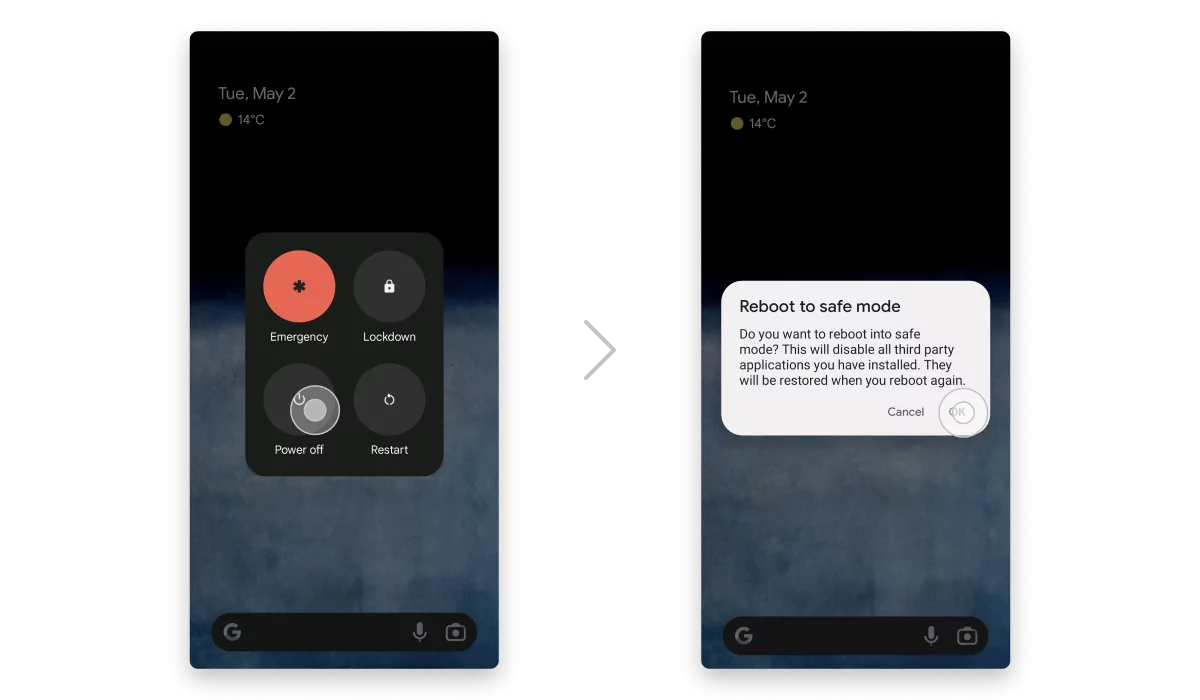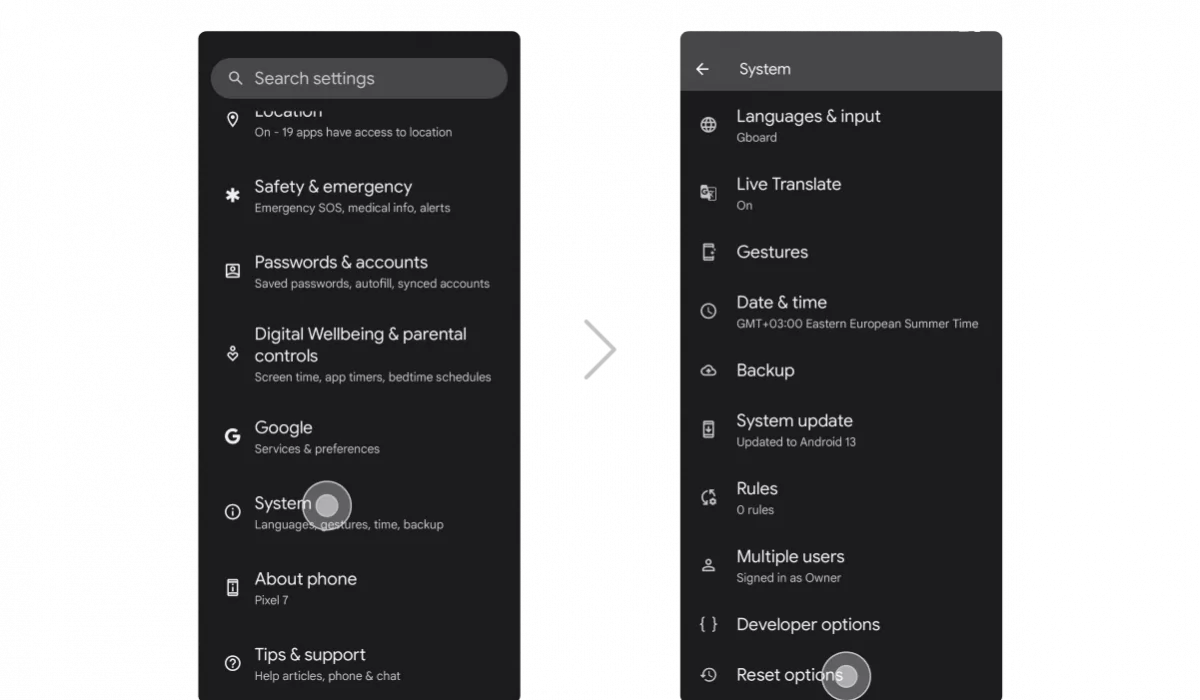How to Get Rid of Adware on Android
Adware is a type of malicious software that is designed to display unwanted advertisements on your device. With its help, unfaithful web marketers cheat view counters on their ads. But apart from being annoying, adware can affect and harm your Android device’s performance and security. This article will show you how to remove adware from Android and protect your device from future infections.
Signs of an Android Adware Infection
You must be aware of the signs of an adware infection to prevent any harm to your device and personal information. Here are some common symptoms of adware infection on Android:
- Unwanted Ads: The unusual number of ads appearing on your device, especially ones that are difficult to close or keep popping up, can be a sign of adware infection.
- Slow Device Performance: Adware can slow down your device’s performance, causing apps and web pages to take longer to load and the device to freeze or crash frequently.
- Excessive Battery Usage: Adware on Android can also cause excessive battery usage, as it runs in the background and constantly displays ads. If you charge your device more often but use your phone as usual, it may be due to adware infection.
- Strange Pop-Ups: If you see strange pop-ups or notifications on your device, especially ones that ask you to download or install a particular app, it may be adware trying to trick you into downloading more malicious software.
- Suspicious Apps: If you notice unfamiliar apps installed on your device or apps you don’t remember downloading, it is a sign of adware.
- Redirected Web Pages: If your browser keeps redirecting you to suspicious websites, it may indicate adware infection. Apart from being annoying, those websites can be unsafe and even attempt to steal your personal information or install more harmful software.
Some of these symptoms can occur because your phone is getting older, but combined with unfamiliar apps and tons of ads, it might indicate adware presence. In the following paragraphs, you’ll learn how to remove adware from Android.
How to Remove Adware from Android Phone
Removing adware from your phone requires a comprehensive approach that involves multiple steps, as simply deleting the infected app may not be enough. Even if you manage to remove the adware, there may still be residual files or apps that can lead to future infections. Follow our step-by-step guide thoroughly to delete adware from Android.
Step 1: Boot into Safe Mode
- Press and hold the power button until the power menu appears.
- Press and hold the Power off option until the Reboot to Safe mode option appears. Tap OK to confirm, and your phone will boot into safe mode.

Step 2: Uninstall Suspicious Apps
- Go to Settings.
- Find and tap Apps.
- Scroll through the list to find any suspicious or unfamiliar apps. Tap on each app and select Uninstall to remove them from your phone.

Step 3: Clear Cache and Data
- Go back to Settings > Storage menu.
- Select Cached data and tap OK to clear the cache.
- Then, go back to Settings > Apps and select the suspicious apps again. Tap on Storage and then Clear data to remove any remaining app traces and stop adware on Android.
Step 4: Remove Allowed notifications for the adware website
- Open Chrome.
- Tap Options and choose Settings.
- Scroll down and tap Site settings.
- Open Notifications and remove Allowed notifications for the annoying site or disable them altogether.
- If you don’t see a removing option and it just says “exceptions”, tap on the website link where it says it under exceptions, and then it will take you to settings, where you can turn the notifications off.

Step 5: Install a Trusted Antivirus App
This is the easiest step that requires zero imagination. Go to the Google Play Store and download a trusted antivirus app like Malwarebytes or Bitdefender. Run a scan to check for adware and any remaining threats, and follow the app’s instructions to block adware on Android.
Step 6: Factory Reset the Phone (if necessary)
Note that this will erase all of your data and settings, so back up any important files before doing so. If you still have adware-affected problems after trying the above steps, you may need to perform a factory reset.
- Go to Settings.
- Scroll and find System.
- Choose Reset options, tap Erase all data (factory reset), and follow the prompts to reset your phone to its original state.

The instructions differ a bit from phone to phone, so it is better to search for the exact guide for your phone model.
Now that you know how to get rid of adware on Android, learn how to protect it from future infections. Keep reading.
How to Prevent Adware from Infecting Your Android Phone
Regarding adware, it’s always better to take preventive measures than to deal with it afterward. Fortunately, those measures are as simple as can be, and there is a big chance you already take them. By following these tips, you can keep your phone running smoothly and avoid the headaches of adware infections.
- Only download apps from trusted sources
One of the easiest ways to prevent adware infections is by only downloading apps from trusted sources like Google Play Store. Be wary of downloading apps from third-party sites or unknown sources, as these apps may contain malware or adware. If you really need an APK, upload it to VirusTotal to check for threats.
- Read reviews before downloading an app
Always read reviews of applications as they can provide valuable insights into an app’s performance and whether it contains adware or other issues. Responses of the app’s representatives (or lack of response) will also tell you how much they value their customers.
- Check app permissions
Checking app permissions can also help you spot potential problems, as some apps may request excessive permissions that could indicate adware or other security risks. By default, permissions for new applications on your phone are disabled, and you should pay attention to what an app tries to get access. The following permission requests should trigger your concern:
- Camera
- Location
- Microphone
- Contacts
If, for example, the Calculator app tries to access your Contacts or Location, you must check what for. The same goes for any app if you don’t want to wonder why there’s adware on my Android.
- Keep your phone and apps up to date
Keeping your phone and apps up to date can also help prevent adware infections. Developers often release updates that include security patches and bug fixes, which can help protect your phone. Keeping your phone and apps up to date can minimize your risk of adware infections and other security issues.
- Use antivirus software
Installing antivirus software on your Android phone is another effective way to prevent adware infections. Antivirus software can detect and get rid of adware on an Android phone, as well as provide ongoing protection against new threats. Be sure to choose a reputable antivirus app, like Malwarebytes, the one we suggested earlier, and keep it up to date for the best protection.
- Avoid clicking on suspicious links or pop-ups
Finally, be cautious when clicking on links or pop-ups that appear suspicious or unfamiliar. These links can lead to infected websites that can download adware onto your phone without your knowledge. If in doubt, it’s best to avoid clicking on any fishy links or pop-ups.
Stop Adware on Android with AdLock
The logic behind using an ad blocker to prevent adware is obvious: no ads mean no adware. And AdLock can prevent these intrusive ads from appearing on your phone or tablet and protect you from malicious software and online threats.
AdLock is a comprehensive ad blocker that can identify and block a wide range of ads, including banners, pop-ups, and video ads. One app is enough to cover web browsers, apps, and games. Additionally, AdLock can prevent adware from being installed on your device in the first place by blocking harmful websites and protecting you from phishing scams and other online threats.
AdLock is more than just an Android adware blocker. It’s a tool that allows you to tailor your browsing experience to your liking. You have the power to whitelist or blacklist sites, adjust filtering sensitivity, and prevent tracking with the anti-tracking feature. With AdLock, you can ensure your online experience is faster, cleaner, and, most importantly, safer. For an affordable yearly cost of $28 or a monthly fee of $3.49 for up to FIVE DEVICES, you can rest assured that you’re protected from adware and other malicious software. This investment will save you time, money, and hassle in the long run.
Final Thoughts
It’s always better to prevent adware from infecting your device in the first place rather than dealing with the consequences later. You can significantly reduce the risk of adware infections by following simple tips from this article, such as using AdLock and updating your apps. In case of an infection, removing adware on Android immediately is essential.
Frequently Asked Questions
How do I scan my Android device for adware?
You must first download an antimalware-antivirus app to scan your device for adware. Try Malwarebytes or Bitdefender. After you install one of those applications, follow their instructions to scan your device and delete anything they found.
What happens if you click on adware on Android?
Clicking on adware on Android can redirect you to malicious websites or download harmful apps onto your device without your knowledge. If files are downloaded to your device, upload them to VirusTotal to check for maliciousness. If there are no threats, just delete them and never click suspicious links and ads. Otherwise, scan your device with an adware removal on Android and take all other steps from this article.
How to remove adware from the lock screen on Android?
- Open Settings.
- Find the Lock screen option and tap to open it.
- Under the LOCK SCREEN section, tap to open Wallpaper Carousel.
- Turn off the Wallpaper Carousel and choose No thanks on the screen that will pop up below.
- Now tap Privacy Policy and turn off all toggles.
- Tap Withdrawal of consent => Wait for the timer to run out and tap Withdraw.
If you still see ads on your lock screen, and they look like banners, then you have an app that runs in the background all the time and alters your lock screen. To detect it, do this:
- Open Settings => Scroll down til you find Developer Options. If you can’t see that feature, it means it’s disabled.
- To enable Developer Options, tap About Phone or About Device => tap Software Information.
- Tap Build number seven times.
- Enter your pattern, PIN, or password to enable the Developer options menu.
- Now, go back to Settings and tap Developer options.
- Scroll down and tap Running services.
- Find an app that shouldn’t be running in the back (most likely, it’s a game or Flashlight), and then find it on your device and delete it.
Does adware steal information from my Android device?
The adware itself doesn’t steal information, but it can lead you to dangerous websites and make you download malware that can steal your files or corrupt your device. That’s why removing adware from Android phones or tablets is not just a matter of comfort, but also security.